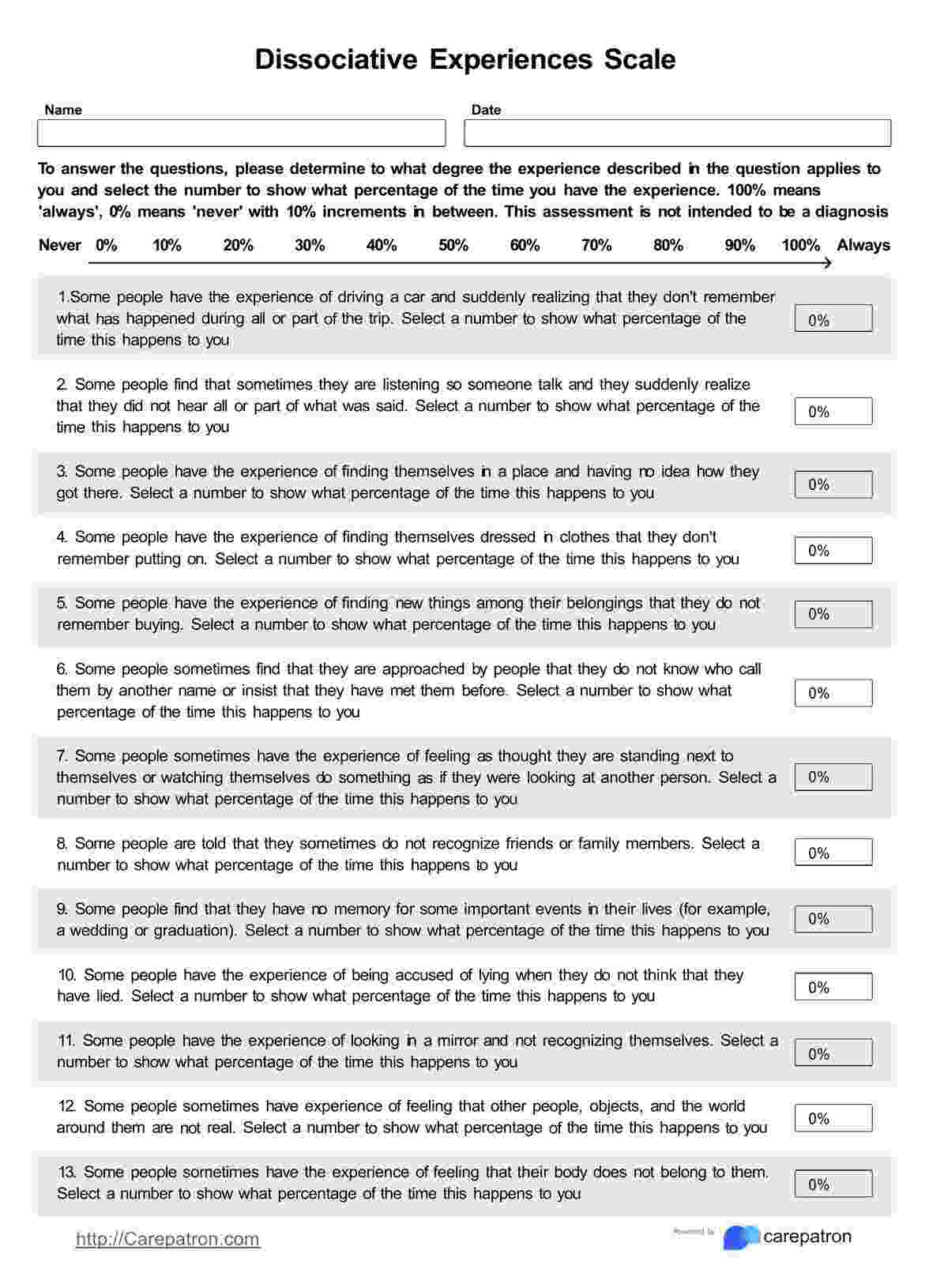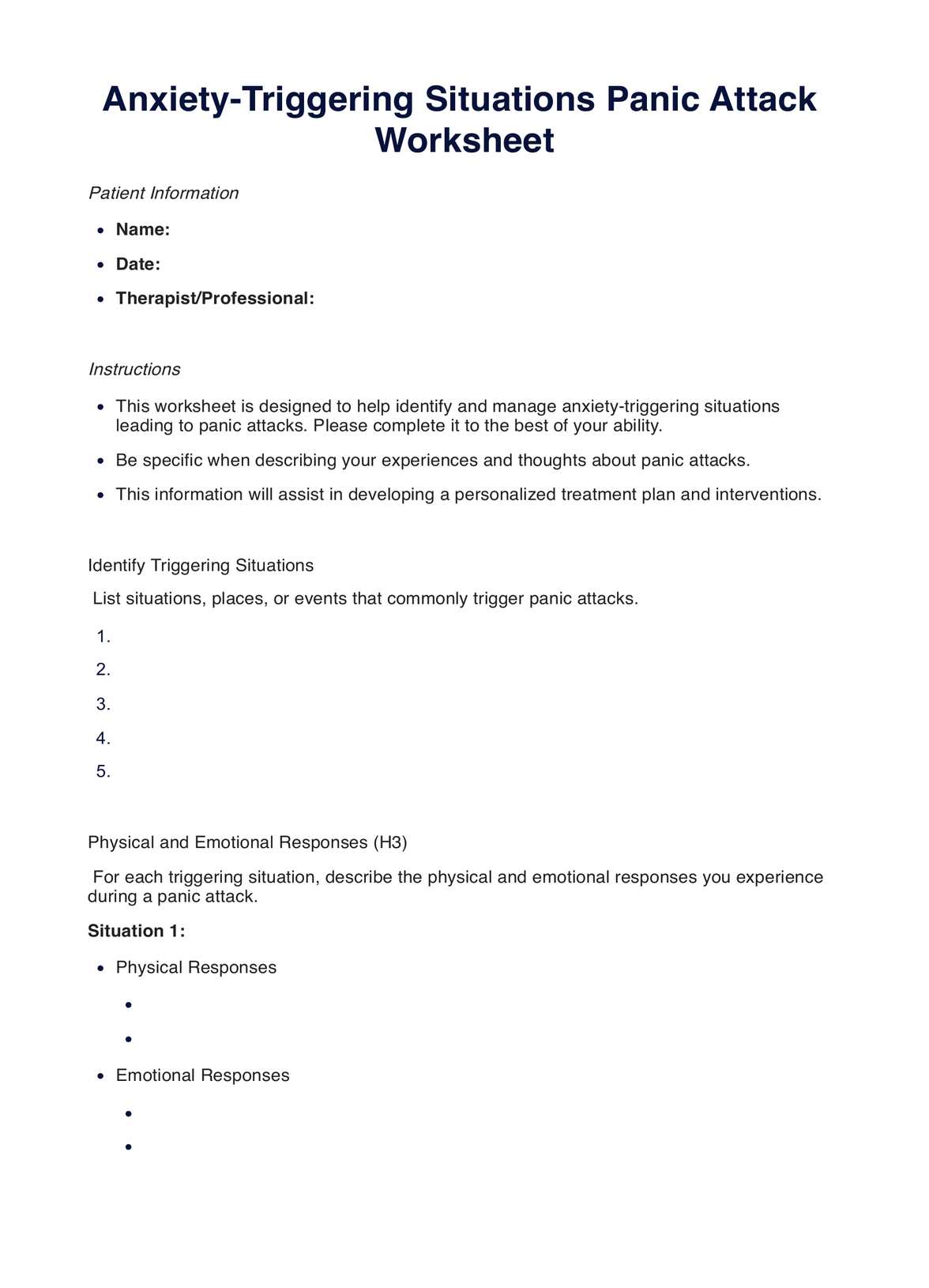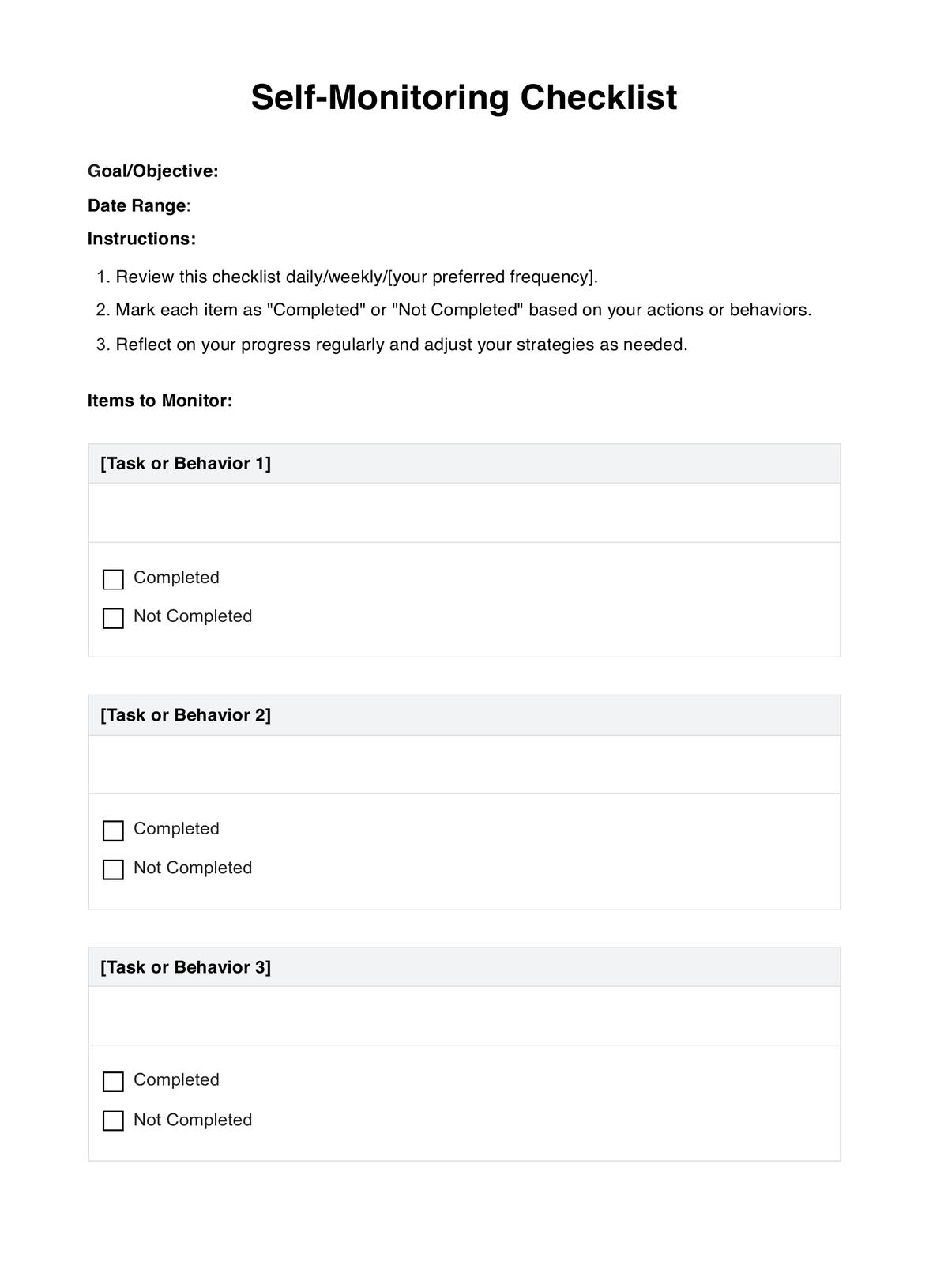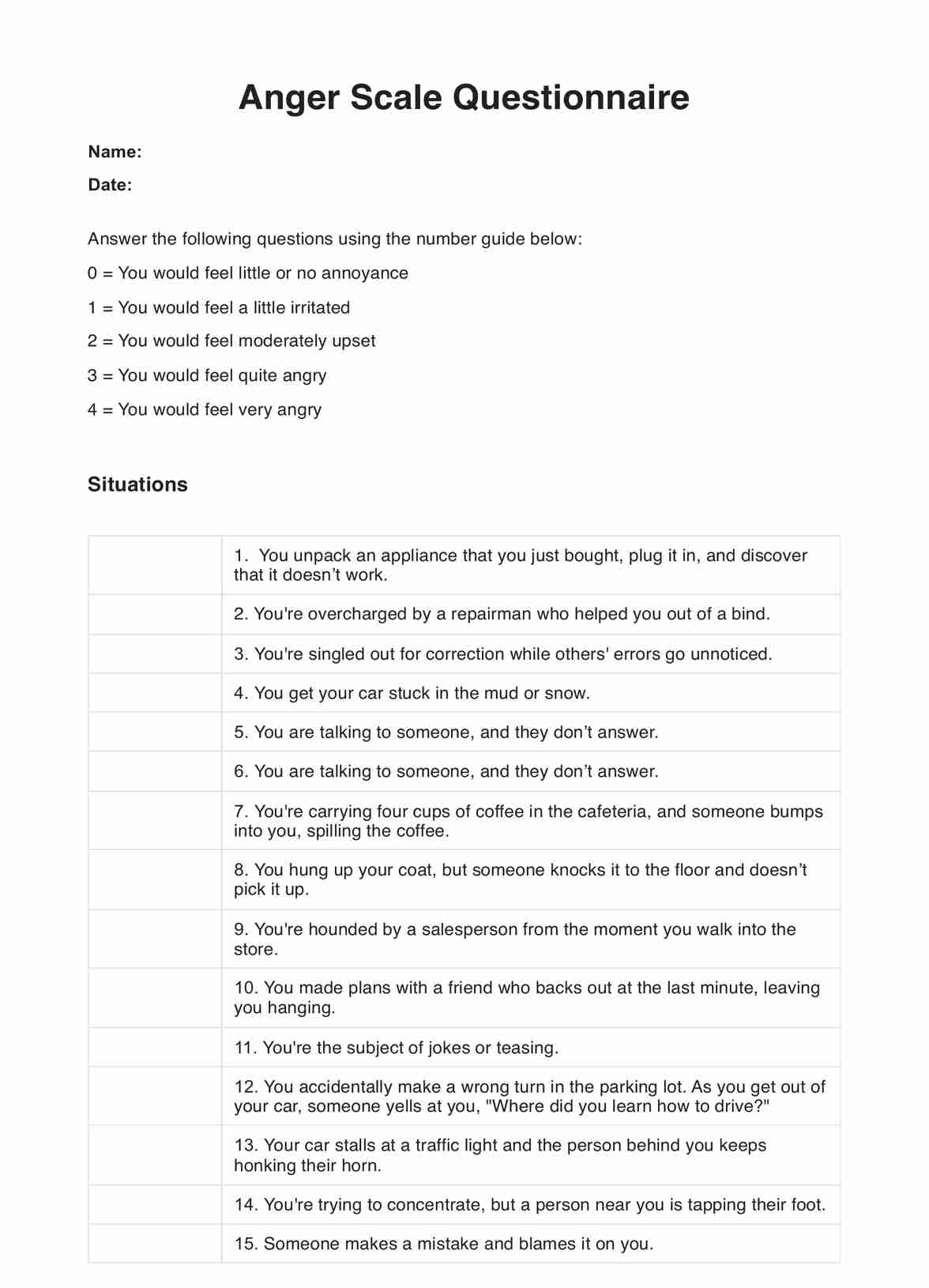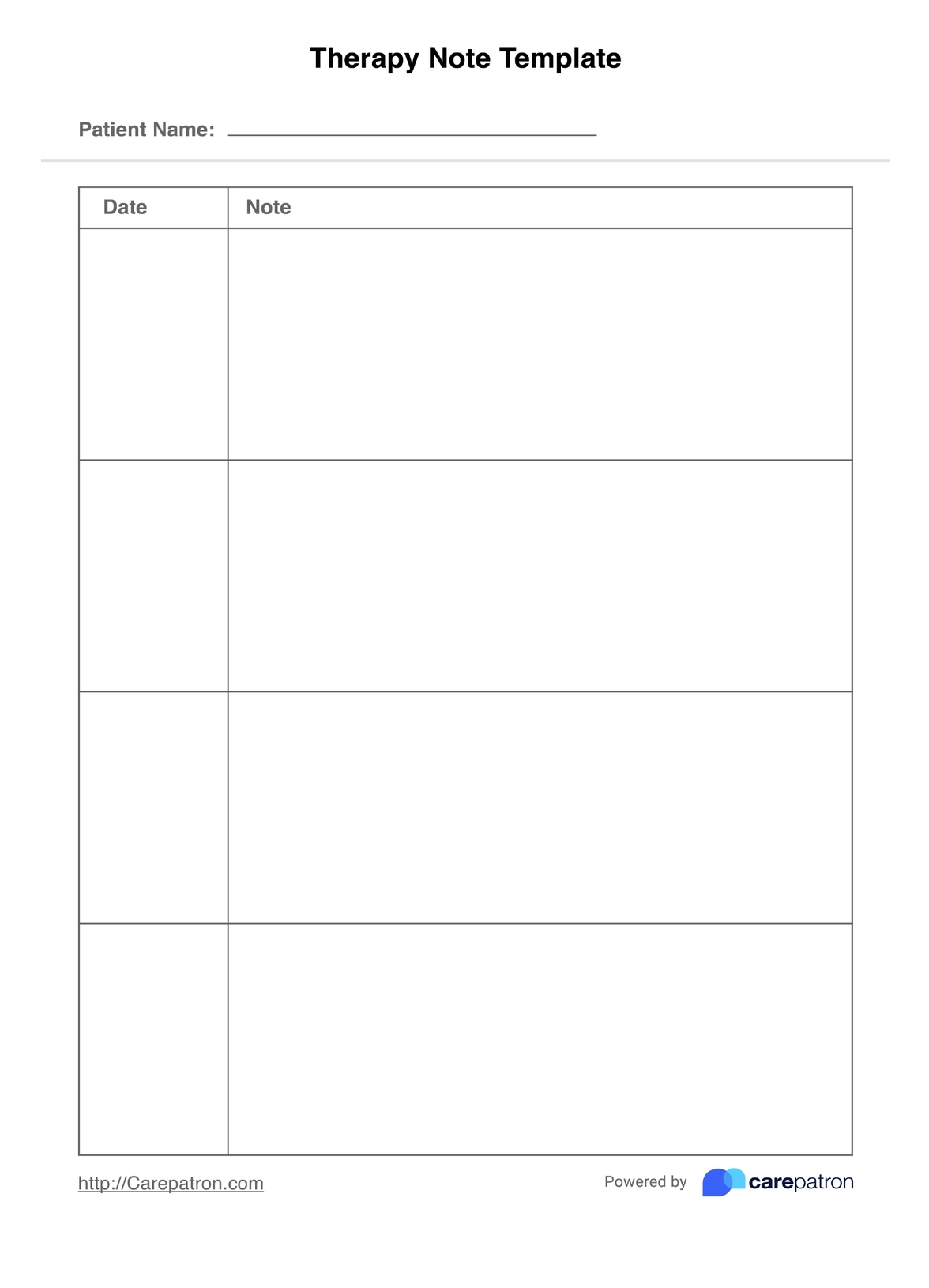Common Suicidal Thoughts PTSD Worksheet and Handout
Manage PTSD-related suicidal thoughts with the Common Suicidal Thoughts PTSD Worksheet and Handout. Take control of your mental well-being now.


What is Trauma and PTSD?
Trauma is a deeply distressing experience with profound psychological and emotional effects. PTSD is a specific mental condition that can develop after such trauma, marked by symptoms like intrusive thoughts, flashbacks, emotional numbness, and avoidance behaviors. It can significantly impact daily life.
Suicidal ideation and behaviors can occur in individuals with PTSD due to the overwhelming psychological distress associated with the disorder. Suicidal ideation refers to thoughts of self-harm or suicide, while suicidal behaviors encompass actions taken to harm oneself. In the context of PTSD, these thoughts and behaviors often arise from feelings of hopelessness, guilt, shame, and a sense that life is unmanageable.
PTSD-related suicidal ideation may manifest as individuals believing they are better off dead, that their loved ones would be happier without them, or that there is no way out of their suffering. In severe cases, these thoughts can escalate to suicidal behaviors, such as self-harm or suicide attempts.
It is crucial to recognize the link between PTSD and suicidal ideation/behaviors and seek professional help promptly. Effective treatment approaches, including therapy and medication, can help individuals manage their PTSD symptoms and reduce the risk of suicide. Support from loved ones, awareness, and early intervention are key to promoting recovery and preventing tragic outcomes for those affected by PTSD.
Common Suicidal Thoughts PTSD Worksheet and Handout Template
Common Suicidal Thoughts PTSD Worksheet and Handout Example
How to use the Common Suicidal Thoughts PTSD Worksheet and Handout:
The worksheet and handout provide a structured approach to assessing and managing these distressing thoughts. Here's how to use it effectively in six steps:
Step 1: Download the Common Suicidal Thoughts PTSD Worksheet and Handout
Begin by obtaining a copy of the worksheet and handout, typically available through mental health professionals, online resources, or support organizations.
Step 2: Self-Reflection
Start by taking time to reflect on your current emotional state and experiences. This step involves recognizing and acknowledging the presence of any suicidal thoughts.
Step 3: Mark Familiar Thoughts
Review the list of common suicidal thoughts provided in the worksheet. Mark the thoughts that resonate with your situation by indicating "Yes" or "No" for each.
Step 4: Seek Professional Help
If you've marked any familiar thoughts as "Yes," take them seriously and consider it a crucial sign to seek immediate professional help. Connect with a therapist, counselor, or mental health specialist.
Step 5: Share with a Support System
Share your feelings and concerns with someone you trust, such as a friend, family member, or support group. They can provide emotional support and encouragement throughout your recovery journey.
Step 6: Follow Recommended Steps
Utilize the worksheet's guidelines and the accompanying handout to follow the recommended steps for addressing suicidal thoughts in the context of PTSD. This may include seeking therapy, creating a safety plan, practicing self-care, and building a support network.
When would you use this Common Suicidal Thoughts PTSD Worksheet and Handout?
Initial Self-Reflection: When someone with PTSD notices recurring and distressing thoughts of self-harm or suicide, this worksheet can be instrumental. It helps them evaluate their emotional state and clarify the severity of their thoughts.
Therapy Sessions: Mental health professionals, including therapists, counselors, and psychologists, can incorporate this worksheet into their sessions. It aids in assessing the patient's current mental state and tailoring treatment plans accordingly.
Emergency Situations: During acute episodes of suicidal ideation, individuals can use this worksheet to self-assess and then promptly share their concerns with healthcare providers or crisis hotlines. It provides a structured way to communicate their feelings.
Support Groups: Support group leaders can utilize this worksheet to facilitate discussions about suicidal thoughts within the context of PTSD. It encourages participants to open up and seek help.
Family and Friends: Loved ones can use this resource to understand the experiences of someone with PTSD better. It can foster empathy and guide them in providing appropriate support.
Preventative Measures: For those in recovery from PTSD, the Common Suicidal Thoughts PTSD Worksheet and Handout can serve as a preventative tool. Periodically revisiting it helps individuals monitor their mental health and identify warning signs before thoughts escalate.
What are the benefits of using this Common Suicidal Thoughts PTSD Worksheet and Handout?
Organized Self-Evaluation
The free Common Suicidal Thoughts PTSD Worksheet and Handout provides a structured framework for individuals to assess their suicidal thoughts within the context of PTSD, aiding in categorizing thoughts and a clearer grasp of emotional states.
Timely Intervention
Research indicates the critical role of early intervention in addressing suicidal ideation (Hawton et al., 2013). This worksheet assists in promptly identifying problematic thoughts, enabling individuals to seek professional help.
Tailored Treatment Planning
Mental health professionals can employ this resource to craft personalized treatment plans. The worksheet assists therapists in comprehending the depth of their patients' struggles, potentially enhancing therapy effectiveness.
Facilitating Communication
It encourages candid communication between individuals and their healthcare providers, family members, or support groups. Discussing one's responses on the worksheet can result in a more accurate risk assessment and formulation of a safety plan.
Commonly asked questions
The time needed to complete it can vary, depending on individual introspection and the depth of their thoughts. Some may finish it in one sitting, while others may take several sessions to address their feelings thoroughly.
�?�
You can access and use the worksheet and handout anytime. It's most effective when individuals with PTSD experience recurring suicidal thoughts. It helps them evaluate their emotional state, seek professional help, and express their feelings effectively.
It is meant for individuals with Post-Traumatic Stress Disorder (PTSD) experiencing suicidal thoughts. It can be used by those individuals themselves, mental health professionals, therapists, support groups, or loved ones looking to offer assistance and support to someone in need.


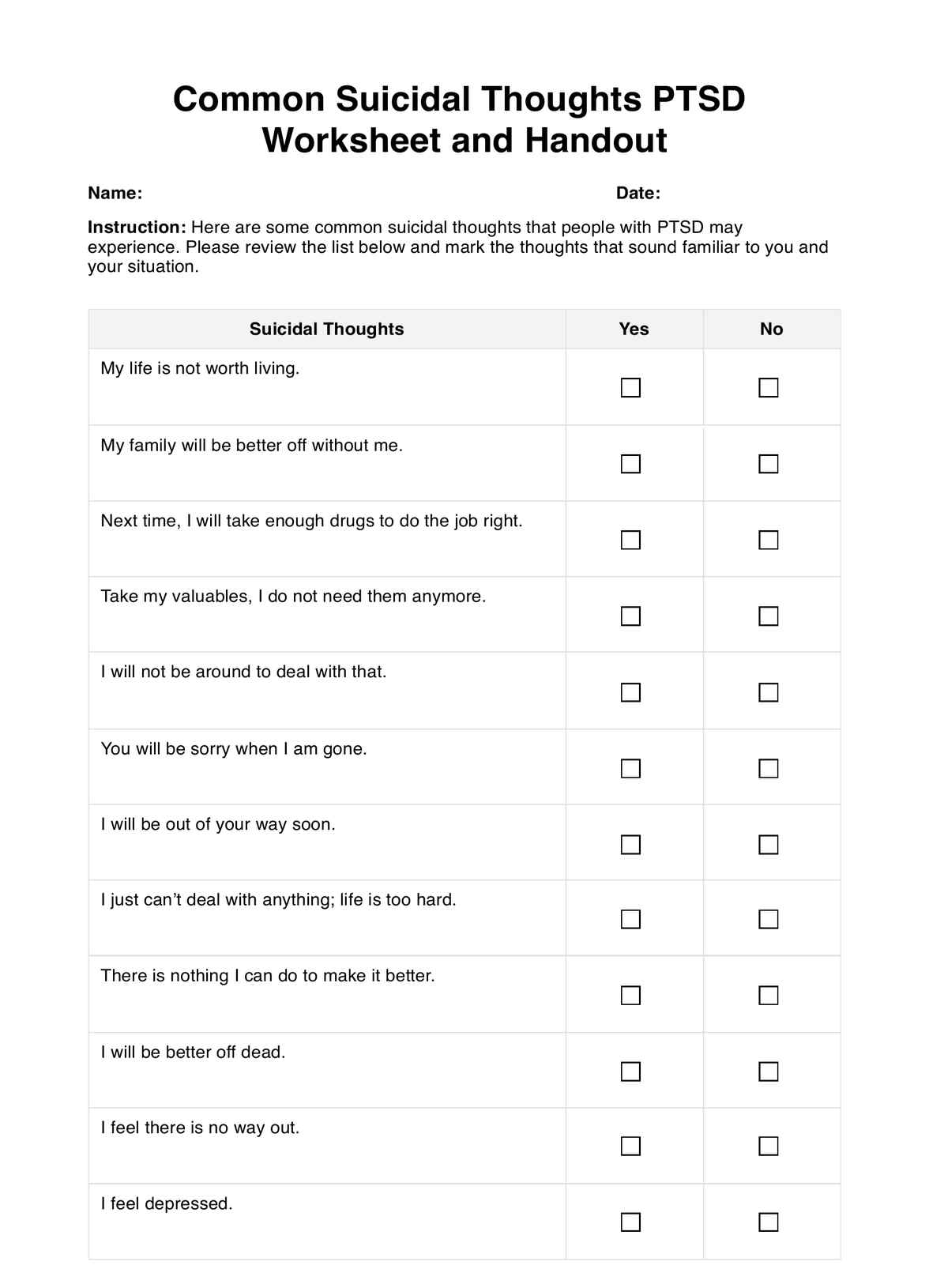
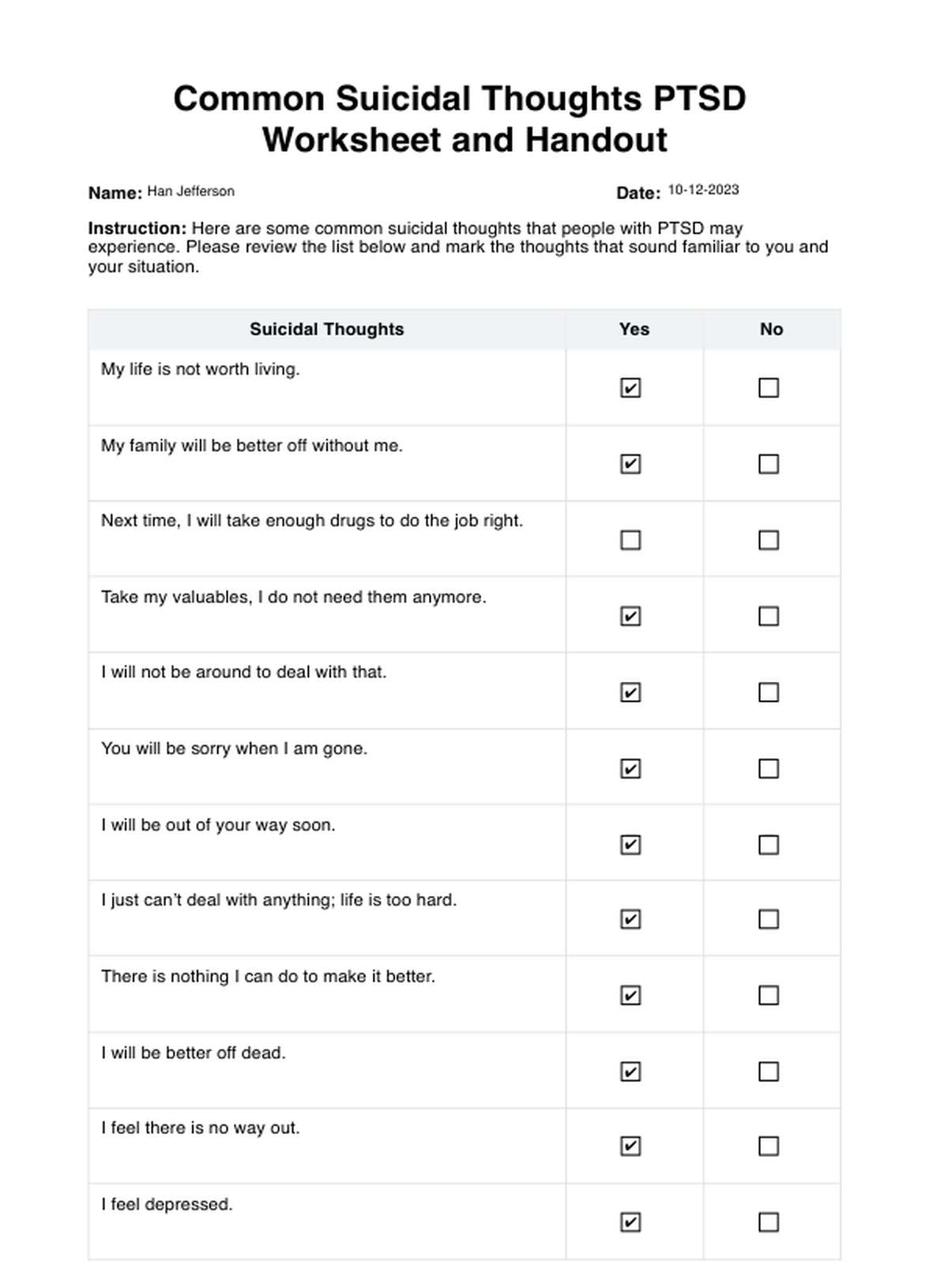
















-template.jpg)




















































































